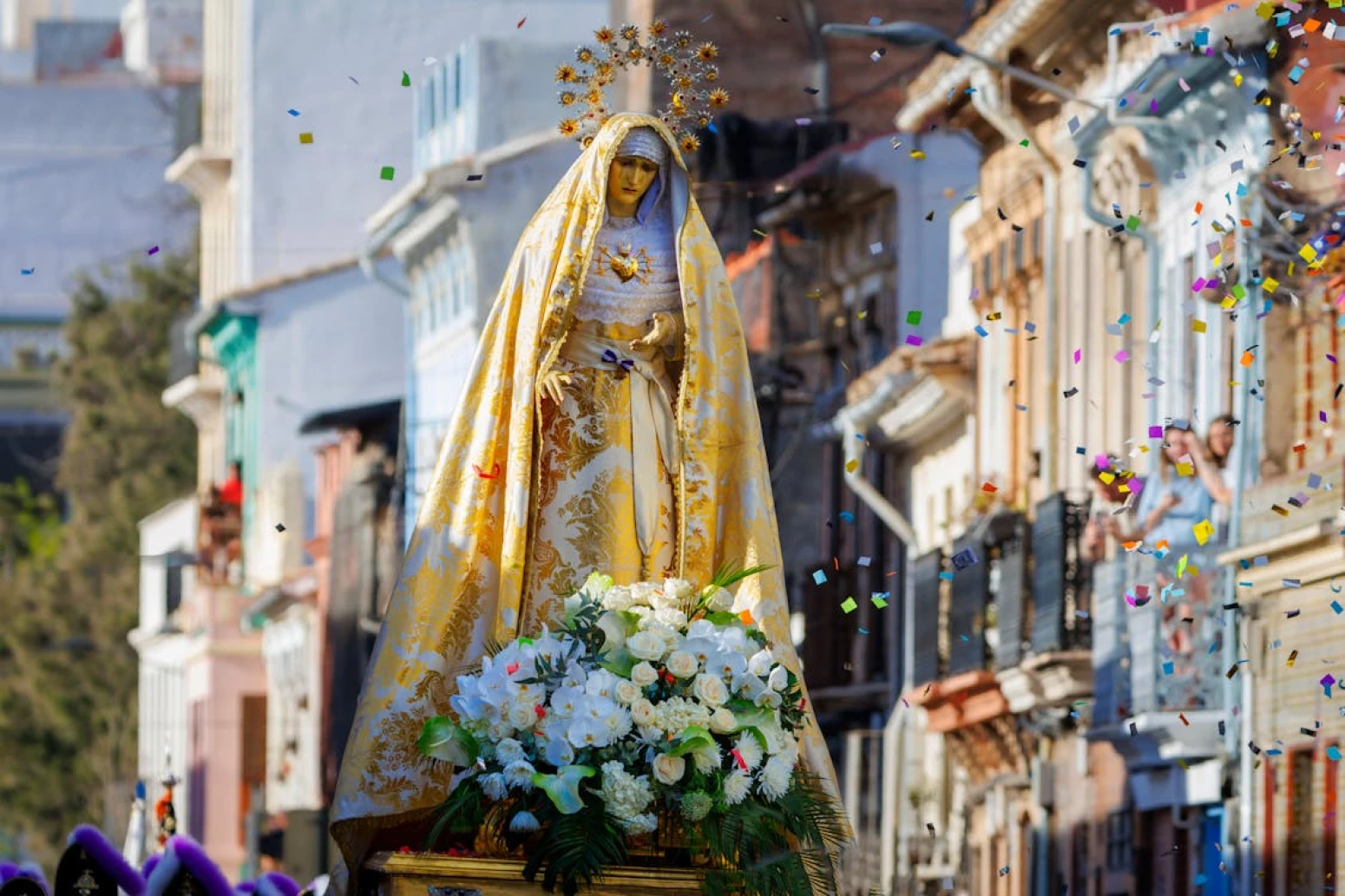If you've ever tried to visit Italy in August and found the shops closed and the locals gone, just know that it’s perfectly normal. Chances are you’ve stumbled right into the social media famous Ferragosto. But what is Ferragosto exactly? Is it just a day off? A religious event? A reason to hit the beach?
Actually, it's a little bit of everything.
Ferragosto is the summer holiday in Italy. It lands on August 15th and blends history, religion, and pure Italian lifestyle. It’s a national holiday, yes, but it’s also something more: a time to unplug and spend time with family and friends.
What is Ferragosto, really? It’s almost a cultural ritual. The date marks the spiritual high of summer, the moment when the country stops for real. That’s why if you go to the beach you’ll find it full of people relaxing and likely eating long lunches. And in the cities? Crickets. Literally. Most shops are shut, many restaurants close, and even museums may operate on reduced hours.
That said, not everyone vanishes to the seaside. Some folks use the day to recharge at home, others go hiking in the Alps, and some just enjoy the quiet city streets. That’s because Ferragosto is really flexible. The only real point is: take a break, live in the moment, and share it with someone.
Ferragosto didn’t just fall out of the sky as a national day of sunbathing and eating. It has layers: ancient Roman, deeply Catholic, and yes, even a bit of 20th-century propaganda.
Let’s walk through how it all came together!
If you really want to find the very origin of Ferragosto, we have to go way back to 18 BCE. That’s when Emperor Augustus decided that after the exhausting labor of summer harvest, workers (and their animals!) deserved a proper break. He called it Feriae Augusti, which translates to “Augustus’ holidays”, and it was a series of public holidays to rest, celebrate, and yes, party a little.
These days included games, horse races, festivals, and a kind of proto-vacation vibe. Workers were even encouraged to wish their bosses a “buon Ferragosto” to receive, sometimes, a small bonus or tip in return.
It was about morale, unity, and giving people a reason to be happy under Roman rule.
Fast-forward a few centuries. As Christianity took hold across the Roman empire, many pagan traditions were given new meanings. August 15th was eventually chosen by the Church to celebrate the Assumption of the Virgin Mary, celebrating the belief that Mary was taken up to heaven, body and soul.
It soon became (and still is) one of the major Catholic feast days of the year, mixing pagan and Christina traditions. Religious processions and church services became part of the holiday, especially in smaller towns and villages where faith is deeply rooted. And today, even non-religious Italians enjoy the long-standing customs that come with this date.

Then, in the 1920s and ’30s, Mussolini’s regime saw Ferragosto as an opportunity to rally national pride and offer something tangible to the working class. Enter the “Treni Popolari di Ferragosto”, cheap holiday trains that gave people the rare chance to travel to the coast, lakes, or countryside.
The regime didn’t just want people to rest: it wanted them to travel, see the “beauty of the nation,” and feel part of something bigger. These state-sponsored holidays weren’t out of kindness; they were carefully orchestrated tools for control and unity. Still, for many Italians, those first Ferragosto trips were unforgettable. For once, they could pack a suitcase and leave their village behind, even if just for a day.
So yes, Ferragosto has been shaped by emperors, saints, and dictators. Quite the résumé for a summer holiday!
You’ll find that Italians have their own way of doing Ferragosto, depending on where they are and what they love. Here’s a breakdown of the most common, and most beloved, ways to celebrate.
Some towns really lean into the historical and religious roots of Ferragosto, and honestly? It’s amazing to witness.
For most Italians today, Ferragosto is less about traditions and more about slowing down and enjoying the good things: family, food, and sunshine.
This is the part that often surprises visitors the most.
When Ferragosto hits (and the same goes for the weeks surrounding it) most Italians take extended vacations. Offices, factories, small businesses, and even pharmacies shut down. Basically, Italians see August as some sort of sacred downtime.
What’s the origin of this “holiday tradition”? It has economic roots. Before air conditioning and remote work, cities were brutally hot in the summer and people were unable to work at normal rhythm. The countryside or coast, on the other hand, offered relief. Add in school holidays, and you’ve got the perfect storm for a national break.
And even today, when modern conveniences allow more flexibility, the rhythm holds strong. The idea is simple: if everyone's off at the same time, no one's behind when they get back!
Absolutely! At least, if you know what to expect.
Remember to plan ahead. Trains can be packed, and restaurants (at least the ones that are open) might be reservation-only. Also, as we said, museums may have shorter hours or be closed entirely.
But if you go where Italians go (seaside towns, hilltop villages, mountain retreats) you’ll get to experience Italy at its most authentic. While you’re there, join a festival and try local food. Or simply relax. And if you’re lucky enough to be invited to a Ferragosto meal, don’t say no. It's one of the most genuine ways to connect with the culture!
Take your chance and shape your future in the “Bel Paese”!
Explore our programs!